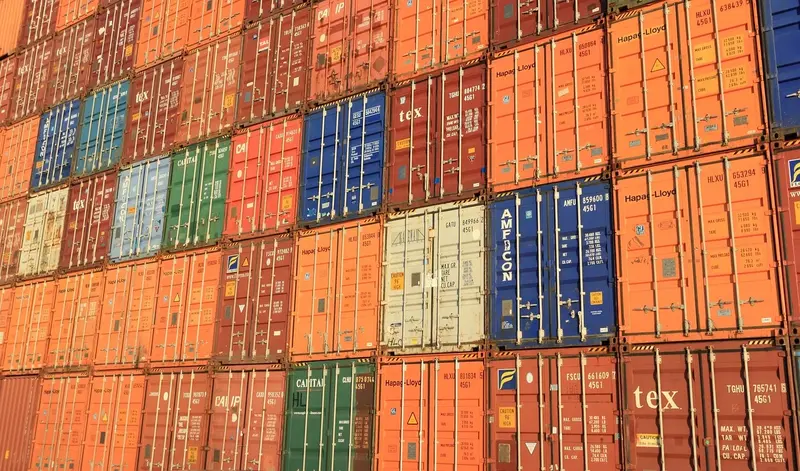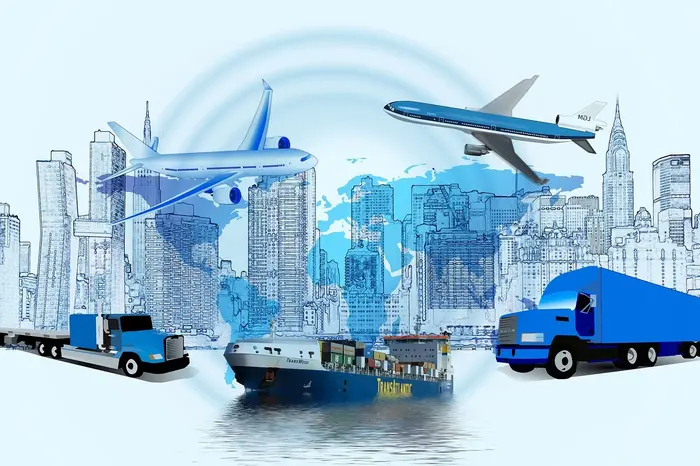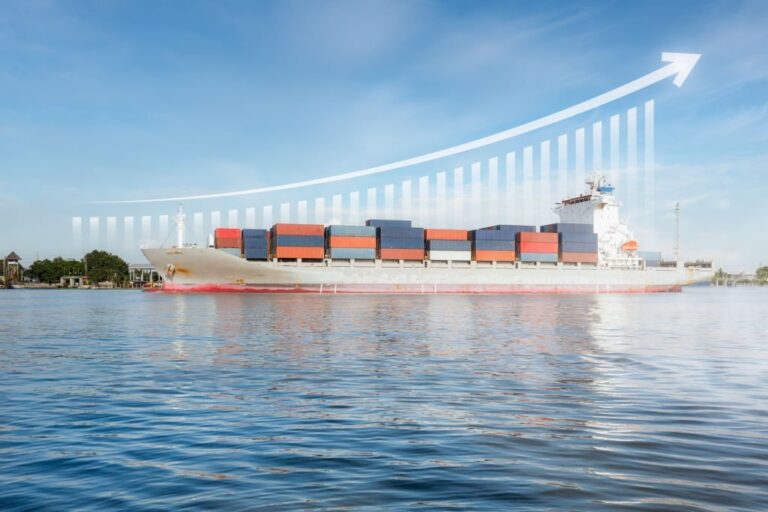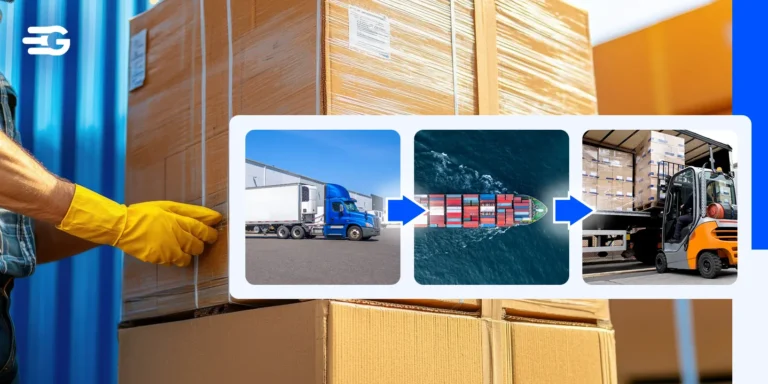Mastering Freight Charges: Navigating Costs in the Shipping Industry
Globalized economies today rely heavily on shipping, which serves as the backbone of international trade, facilitating the movement of goods across continents and oceans. However, behind the seamless flow of products lies a complex web of freight charges and logistics intricacies that can significantly impact businesses’ bottom lines.
Mastering freight charges is essential for companies looking to navigate the dynamic landscape of shipping costs effectively. Understanding the various components of freight charges, from transportation fees to customs duties, is paramount for businesses striving to optimize their supply chain operations and remain competitive in the market.
In this guide, we delve into the intricacies of navigating costs in the shipping industry, providing insights, strategies, and best practices for mastering freight charges. Whether you’re a seasoned logistics professional or a newcomer to the world of shipping, this comprehensive resource aims to empower you with the knowledge and tools needed to effectively manage and mitigate the impact of freight charges on your business.
Understanding Freight Charges
Freight charges encompass the costs associated with transporting goods from one location to another via various modes of transportation, such as ships, planes, trains, and trucks. Utilizing supply chain management software allows businesses to monitor and optimize these charges by providing real-time insights, automating cost comparisons, and identifying the most cost-effective shipping options.
This not only helps reduce overall logistics costs but also enhances decision-making and efficiency across the supply chain.
The factors influencing freight charges include the distance traveled, the weight and volume of the cargo, the mode of transportation used, fuel prices, handling fees, customs duties, insurance costs, and any additional services required, such as warehousing or packaging.
Each mode of transportation has its own set of associated costs, thus making the answer to the question of air freight or ocean freight, complex. For example, shipping goods via ships may incur lower charges per unit of cargo but may take longer to reach the destination compared to air freight, which is faster but more expensive.
Key Factors Influencing Freight Charges
Transporting goods internationally, such as shipping electronics from a manufacturing facility in China to a retail store in the United States, involves calculating freight charges based on various dynamic factors. These charges are influenced by elements such as transportation mode, shipment characteristics, and market conditions. Let’s delve deeper into the key factors affecting freight costs:.
1. Type of Transport (FTL vs. LTL)
The shipment size and requirements significantly determine the transportation mode:
- Full Truckload (FTL): Suitable for large shipments that occupy the entire truck. FTL is often more cost-effective per unit due to direct routes and fewer handling stops, making it ideal for high-volume freight.
- Less Than Truckload (LTL): Designed for smaller shipments that share space with other consignments. While economical for lower volumes, LTL involves more handling and stops, which may affect delivery times and costs.
2. Destination and Delivery Times
The origin-to-destination distance and time constraints directly impact freight charges:
- Distance: Longer routes incur higher transportation costs due to fuel consumption and operational expenses.
- Delivery Speed: Expedited shipping for time-sensitive goods typically costs more than standard delivery options. A balance between speed and cost is essential based on business needs.
3. Fuel Costs
Fuel prices are a critical and volatile component of freight charges:
- Fluctuations in global oil prices influence fuel surcharges applied by carriers.
- As fuel expenses rise, carriers adjust freight rates to maintain profitability, impacting overall shipping costs.
According to industry estimates, fuel costs can constitute up to 40% of total freight expenses, particularly for long-haul shipments.
4. Driver Shortages
Labor availability within the transportation industry affects pricing:
- A shortage of qualified drivers increases operational costs for carriers, leading to higher freight rates.
- In some regions, driver wages have risen by over 20% in the last decade due to heightened demand and labor shortages, further driving up costs.
5. Seasonal Influences
Seasonality introduces variability in freight charges:
- Peak Seasons: Higher demand during holidays or harvest seasons often results in premium freight rates.
- Weather Conditions: Inclement weather can disrupt supply chains, increasing costs due to delays or rerouting.
For instance, freight rates during the holiday season can surge by 15–25%, driven by a spike in demand for transportation services.
6. Supply and Demand Dynamics
Market imbalances between available capacity and shipping demand significantly influence pricing:
Conversely, during periods of reduced demand, rates may stabilize or decline.
When demand exceeds capacity, carriers raise rates to maximize profits and allocate limited resources.
7. Economic and Political Factors
Global and regional economic and political conditions shape freight costs:
- Economic Climate: Inflation, currency fluctuations, and GDP growth affect operational costs and demand for shipping services.
- Political Instability: Trade disputes, sanctions, or changes in regulations can disrupt transportation routes and increase costs.
A Comprehensive Guide to Common Freight Charges
When managing international freight, understanding the various charges associated with the shipping process is crucial. These charges cover the full spectrum of services required to move goods from one location to another, ensuring smooth and compliant operations.
Below is an expanded explanation of the most common freight charges encountered during international shipments.
Cargo Insurance
Cargo insurance is designed to protect goods against potential losses, damages, or theft during their transit. Whether transporting electronics, perishable goods, or industrial machinery, ensuring that goods are covered during transport is vital.
The insurance premium typically depends on the declared value of the shipment and the level of coverage required. The coverage generally includes risks like natural disasters, accidents, or theft. Depending on the destination country and the nature of the goods, the premium can range from 0.5% to 2% of the shipment’s value.
This fee is especially crucial for high-value or fragile items, where the risk of damage is higher. Cargo insurance provides peace of mind and safeguards the business from potentially significant financial losses.
Customs Bond
A customs bond acts as a financial guarantee that ensures the shipper complies with customs regulations in the importing country. It secures payment for any duties, taxes, or fines that may arise from non-compliance with customs laws.
This bond is typically required when shipping goods across borders and is used to cover potential liabilities in case of violations or errors during the import process. The exact cost of a customs bond can vary depending on the value of the shipment and the specific customs regulations of the country.
Generally, customs bonds can range from a few hundred to several thousand dollars. Ensuring the proper paperwork and bond coverage is in place helps avoid delays, fines, and penalties, making this charge an essential part of the international freight process.
Booking Fee
The booking fee is charged by freight carriers or forwarders to cover the administrative costs associated with securing space for a shipment. This fee helps offset the logistical and operational tasks required to schedule and organize the shipment.
It includes the coordination of transportation, arranging schedules with various carriers, and ensuring all necessary documentation is prepared for the shipment. The fee can vary depending on the carrier and the complexity of the shipment but is generally a fixed charge per booking.
While often a smaller expense in comparison to others, the booking fee is part of the essential operational costs, helping to streamline the shipping process and ensure timely delivery.
Terminal Handling Charges (THC)
Terminal handling charges are fees levied by terminal operators for the services they provide at ports or terminals. These services include the loading and unloading of containers, as well as the temporary storage of containers while they await further transportation.
THC ensures that the infrastructure at ports is maintained and that the logistical flow of goods is as smooth as possible. Depending on the port, these charges can range from $100 to $300 per container, although the exact cost can vary based on the port’s location, size, and facilities.
In busy ports, especially during peak seasons, terminal handling charges can increase due to higher demand and limited space for containers. These charges are typically calculated per container and are paid to the terminal operator before the goods are loaded or unloaded.
Documentary Fees
Documentary fees cover the cost of preparing and processing the essential shipping documents needed for customs clearance, shipment tracking, and delivery. These documents typically include bills of lading, certificates of origin, packing lists, and customs declarations.
The preparation of these documents requires attention to detail and compliance with the regulations of both the exporting and importing countries. Documentary fees usually range from $20 to $50 per document, depending on the type of document and the complexity of the shipment.
These charges ensure that the shipment is fully compliant with all legal and regulatory requirements, which is essential for avoiding delays at customs and ensuring the smooth transit of goods.
Origin/Destination Charges
Origin and destination charges are location-specific fees that are incurred at either the point of departure or the final destination of the shipment. These fees cover the costs of handling the goods at the ports or terminals, including port fees, loading and unloading costs, and any inland transportation required for moving goods from the port to the final destination.
Origin charges typically include the cost of transporting goods from the warehouse to the port, while destination charges cover unloading and delivery to the consignee. These charges can vary significantly depending on the geographical region and the infrastructure of the port or terminal.
In some cases, these fees may include additional costs such as handling hazardous materials, specialized storage, or security services.
Demurrage Charges
Demurrage charges are applied when a container stays at a terminal for longer than the free time allocated by the carrier. Free time refers to the period during which containers can be stored at the terminal without incurring additional costs.
When containers are not retrieved within this time frame, demurrage charges are levied to compensate the carrier for the extended use of their space. The charges are designed to incentivize the swift removal of containers to avoid congestion at the terminal.
Demurrage fees typically increase daily, starting around $50 per container per day and escalating with each delay. These charges can significantly impact costs, especially during peak seasons when terminals are crowded. Understanding the Causes of Demurrage Charges and How to Avoid Them can help businesses minimize these expenses.
Load, Lash, and Secure (LLS)
This charge covers the cost of securing cargo inside containers to ensure it does not shift or get damaged during transit. Proper loading and securing of cargo is critical for preventing damages during transportation. Goods, especially fragile or high-value items, need to be tightly secured to prevent movement inside the container, which could lead to damage or loss.
The cost of securing cargo can vary depending on the type of cargo and the level of security required. For example, delicate goods such as electronics or machinery may require more advanced securing techniques, leading to higher charges.
Load, lash, and secure fees typically range from $150 to $500, depending on the complexity and materials required to secure the cargo properly.
Destination Fuel Surcharge
The destination fuel surcharge is an additional fee that accounts for fluctuations in fuel prices. Fuel prices are volatile and can vary greatly depending on global oil markets and regional supply and demand. This surcharge helps carriers offset the increased costs of fuel, which can significantly impact the overall cost of shipping, especially for long-distance or heavy freight.
Typically, the surcharge is calculated as a percentage of the freight charges and can range from 5% to 15%, depending on the distance and the current price of fuel. This fee helps ensure that the carrier can continue to operate efficiently despite rising fuel costs, which are beyond their control.
Container Cleaning/Fumigation Fees
Containers may need to be cleaned or fumigated to comply with quarantine or safety regulations, particularly when transporting goods like food, plants, or wood. Many countries have stringent regulations designed to prevent the spread of pests, diseases, or contaminants.
Fumigation and cleaning fees cover the cost of treating containers to meet these regulations before goods can be imported. Depending on the type of cargo and destination country, cleaning and fumigation fees can range from $50 to $200 per container.
These fees are often required when transporting goods from regions with higher risks of contamination, and failure to comply with these regulations can result in delays or fines.
Understanding these freight charges helps businesses more accurately estimate shipping costs and avoid unexpected expenses. By familiarizing themselves with these charges, shippers can plan their logistics operations more effectively, making informed decisions that can save money, ensure compliance, and streamline the transportation process.ns.
To know more about other aspects of a shipper’s operation read the blog about the top 9 shipping terms.
Calculating Freight Charges
The method used to calculate freight charges depends on various factors such as the nature of the goods, transportation mode, and distance traveled. Different approaches ensure accurate pricing and help businesses find the most suitable structure for their needs. Here’s a clearer breakdown of common methods:
Freight Charge Per Unit
This method is best suited for shipments that consist of multiple items or products, especially when they vary in size and weight. It calculates the freight cost based on the quantity or number of items being shipped.
How it Works:
The freight charge is calculated by multiplying the number of units by the rate per unit. This approach provides a straightforward method of pricing for businesses dealing with bulk shipments or items sold individually.
Formula: Total Freight Charge = Number of Units * Freight Charge per Unit
Example:
If a shipment contains 100 units, and the charge is $5 per unit, the total freight charge would be:
Total Freight Charge = 100 units * $5 per unit = $500
Benefits:
- Flexible pricing, allowing for adjustments like volume discounts or special promotions
- Precise pricing for bulk or individual shipments
Freight Charge Per Kilometer
This method is commonly used for transportation modes where distance plays a crucial role, such as trucking or rail freight. Freight charges are calculated based on the distance the shipment travels.
How it Works:
Charges are calculated based on the distance between the origin and destination. This method ensures that the costs align with the actual distance traveled, making it fair for both parties.
Formula:
Total Freight Charge = Distance Traveled * Rate per Kilometer
Example:
If the rate is $2 per kilometer, and the shipment travels 500 kilometers, the total freight charge would be:
Total Freight Charge = 500 kilometers * $2 per kilometer = $1000
Benefits:
- Offers cost control opportunities, allowing businesses to optimize routes and select carriers with competitive rates
- Provides an accurate cost structure based on actual travel distance
Which Method to Choose?
The choice of calculation method depends on various factors such as the nature of the goods, the mode of transportation, and the specific needs of the shipment. By offering flexible pricing options, carriers and logistics providers can better meet customer requirements and stay competitive in the market.
These methods help businesses predict and manage shipping costs, ensuring efficient logistics and customer satisfaction while allowing room for adjustments based on unique needs.
Challenges and Solutions in Freight Charges
Freight charge discrepancies can create significant hurdles for businesses in the logistics and shipping sectors. Issues such as damaged freight, invoice discrepancies, and documentation errors can lead to operational disruptions and financial losses. Effectively addressing these challenges requires a strategic approach that leverages both communication and advanced technology.
1. Damaged Freight
Damage during transit remains a common problem, especially for fragile or high-value items. Improper handling during loading and unloading, rough transportation conditions, and inadequate packaging can all contribute to freight damage. When damage occurs, it often results in disputes over liability and compensation, complicating the claims process and delaying resolutions.
2. Invoice Discrepancies
Invoice discrepancies can arise due to variations between quoted and final freight charges, often stemming from unforeseen surcharges, rate changes, or overlooked fees. These discrepancies can cause delays in payment processing and may strain relationships with service providers.
3. Documentation Issues
Inaccurate or incomplete documentation, such as shipping manifests, bills of lading, and customs forms, can severely complicate freight charge reconciliation and dispute resolution. Missing or incorrect documentation can delay shipments and prevent businesses from confirming the accuracy of charges.
Leveraging Technology to Address Freight Charge Challenges
Freight charge discrepancies are an inevitable challenge in logistics, but technology can play a crucial role in mitigating these issues. Platforms like GoComet offer real-time visibility into the entire supply chain, automating processes such as document management and invoice reconciliation. By digitizing workflows and providing accurate, up-to-date information, these solutions enhance communication, reduce human errors, and streamline operations. With the right tools, businesses can address the complexities of freight charges and ensure smoother, more efficient logistics management.
Optimizing Freight Charges for Efficiency
Understanding the intricacies of freight charges is essential for optimizing logistics operations and achieving cost savings. By gaining insight into the various pricing structures and the factors that impact shipping costs, businesses can make more informed decisions to streamline their processes. Working with experienced freight forwarders who have in-depth industry knowledge can significantly benefit businesses. These professionals can provide valuable guidance, negotiate better rates, and design cost-effective strategies that are tailored to the unique needs of each business.
Having discussed various facets of mastering freight charges, it is not merely a matter of balancing financial sheets; but a component that has immense potential to steer businesses toward efficiency and growth. Despite the complexities and challenges inherent in navigating freight costs, upcoming AI-enabled solutions have kept the trends optimistic. As we chart our course through the ever-evolving landscape of logistics, let us embark with confidence, armed with insights and determination to navigate the seas of freight charges with finesse.






